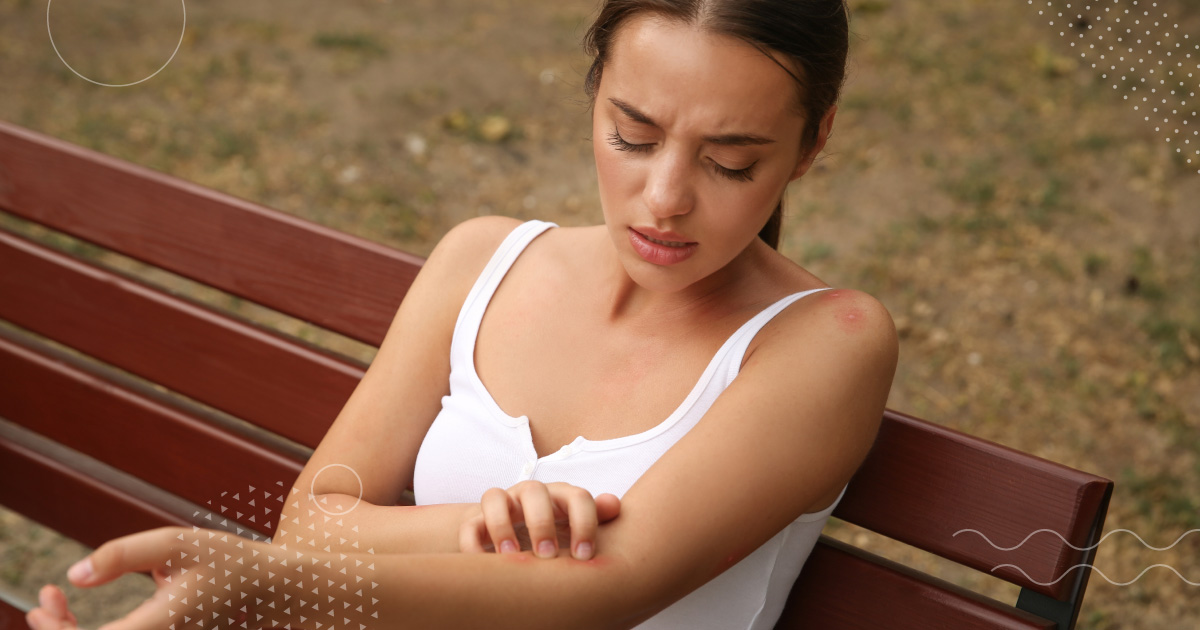When to Seek Emergency Care for a Bug Bite

A bug bite might seem harmless at first, but sometimes it can turn into something more serious. Understanding when a simple bite needs emergency care is important for keeping your family safe.
Let’s learn how to recognize warning signs, care for bug bites at home, and know when it’s time to head to the emergency room.
Common Bug Bites and Their Typical Symptoms
Most bug bites are mild and heal on their own, but different types of bites can cause different reactions. For example, mosquito bites typically cause small, itchy bumps, while ant bites may sting and leave a red, swollen area. Spider bites often look like red, inflamed spots, and bee stings can cause pain and swelling at the site. While these reactions are unpleasant, they are generally not cause for alarm.
However, some bites come with more concerning symptoms. Certain spiders, like the black widow or brown recluse, can cause more severe reactions, including muscle cramps, fever, and necrosis (tissue death) around the bite area. Similarly, insect bites in individuals allergic to bee stings or fire ant bites can cause dangerous reactions like difficulty breathing or swelling of the face or throat.
Signs You Shouldn’t Ignore
It’s easy to dismiss a bug bite as a minor annoyance, but certain signs should not be ignored. Pay attention if you notice:
- Severe swelling or redness – If the area around the bite becomes unusually swollen, red, or tender, this could be a sign of infection or an allergic reaction.
- Difficulty breathing – This is a medical emergency. If a bite causes any difficulty in breathing, or you notice someone wheezing or gasping for air, go to the emergency room immediately.
- Fever or chills – A simple bug bite shouldn’t cause fever. If you develop a fever, chills, or flu-like symptoms after being bitten, this could indicate a more serious infection or a response to venom.
- Dizziness or confusion – Feeling lightheaded or confused after a bite might be a sign of anaphylaxis (a severe allergic reaction) or a more significant problem. This is another reason to seek emergency care.
- Spread of redness or infection – Watch for any signs of redness or swelling spreading from the bite. This can be a sign of a more serious infection, such as cellulitis, and it’s important to have this checked by a doctor.
- Nausea or vomiting – If a bite leads to nausea, vomiting, or stomach cramps, it could be a sign of a venomous spider bite or a severe allergic reaction. Go to an ER for a proper evaluation.
When Is It Time to Go to the Emergency Room?
It’s important to remember that bug bites should not be taken lightly if any of the warning signs appear. If you or a loved one experiences any of the following symptoms, it’s time to visit an ER for immediate care:
- Difficulty breathing or swallowing
- Severe swelling, especially around the face or throat
- A rapidly spreading rash or redness
- Muscle cramps or spasms (common with venomous spider bites)
- Confusion or loss of consciousness
These symptoms could indicate a serious allergic reaction or infection. Acting quickly and seeking emergency medical help can prevent further complications.
Bug Bites and Allergic Reactions
One of the most significant risks associated with bug bites is anaphylaxis. Anaphylaxis is a life-threatening allergic reaction that requires immediate medical attention. Symptoms of anaphylaxis can appear quickly, sometimes within minutes of being bitten. Common signs include:
- A sudden drop in blood pressure
- Difficulty breathing or shortness of breath
- Swelling of the face, lips, or throat
- Rapid or weak pulse
If someone is experiencing anaphylaxis, it’s critical to use an epinephrine auto-injector (if available) and get to the emergency room as quickly as possible. Freestanding ERs like Physicians Premier are equipped to handle allergic reactions and provide life-saving care.
What You Can Do at Home for Minor Bites
For most bug bites, you won’t need to rush to the ER. Here’s what you can do at home to manage minor bites:
- Clean the area – Wash the bite with soap and water to prevent infection.
- Use a cold compress – Use an ice pack or a cold compress to relieve pain or itching and reduce swelling.
- Take antihistamines – Antihistamines like diphenhydramine (Benadryl), available over-the-counter, are effective in soothing itching and reducing allergic responses.
- Apply hydrocortisone cream – For minor swelling and itching, applying a topical corticosteroid cream can help soothe the bite area.
- Monitor for changes – Keep an eye on the bite for any signs of infection or worsening symptoms. If the redness starts spreading or you develop other symptoms like fever, nausea, or difficulty breathing, seek medical attention.
Bug Bite Prevention Tips
Of course, the best way to deal with bug bites is to avoid them in the first place. Here are a few practical tips to help you and your family prevent bug bites:
- Use insect repellent – Apply insect repellent containing DEET or another proven effective ingredient when you’re outdoors, especially during peak mosquito hours (dawn and dusk).
- Wear protective clothing – If you’re spending time in areas where bugs are common, such as hiking or camping, wear long sleeves and pants to reduce the chances of getting bitten.
- Avoid scented products – Bugs are attracted to strong scents, so try to avoid using heavily scented lotions, soaps, or perfumes when outdoors.
- Check for ticks – If you’ve been in wooded or grassy areas, make sure to check for ticks and remove them promptly to avoid tick-borne illnesses like Lyme disease.
- Keep your home bug-free – Ensure windows and doors are sealed properly to prevent bugs from entering and use screens to keep them out.
Bug bites are a common annoyance, but knowing when to care for bug bites at home or seek medical attention can be life-saving. While many bites are harmless and can be treated at home, more severe symptoms, such as trouble breathing or spreading infection, require prompt emergency care. Freestanding ERs like Physicians Premier are here to provide expert treatment for bug bite-related emergencies, ensuring your family stays safe and healthy.
For more information on emergency care and other health tips, visit Physicians Premier. We’re here to help you make informed decisions about your family’s health and safety.
Sources:
“What Bit Me? Spot These 13 Bug Bites,” Everyday Health, https://www.everydayhealth.com/skin-and-beauty-photos/how-to-identify-common-bug-bites.aspx
“Insect bites and stings: First aid,” Mayo Clinic, https://www.mayoclinic.org/first-aid/first-aid-insect-bites/basics/art-20056593
“Insect bites and stings,” NHS Inform, https://www.nhsinform.scot/illnesses-and-conditions/injuries/skin-injuries/insect-bites-and-stings/
“Insect Sting Allergies,” American College of Allergy Asthma and Immunology, https://acaai.org/allergies/allergic-conditions/insect-sting-allergies/
“What to Do About Bug Bites and Stings,” Nemours Kids Health, What to Do About Bug Bites and Stings, https://kidshealth.org/en/parents/insect-stings-sheet.html


